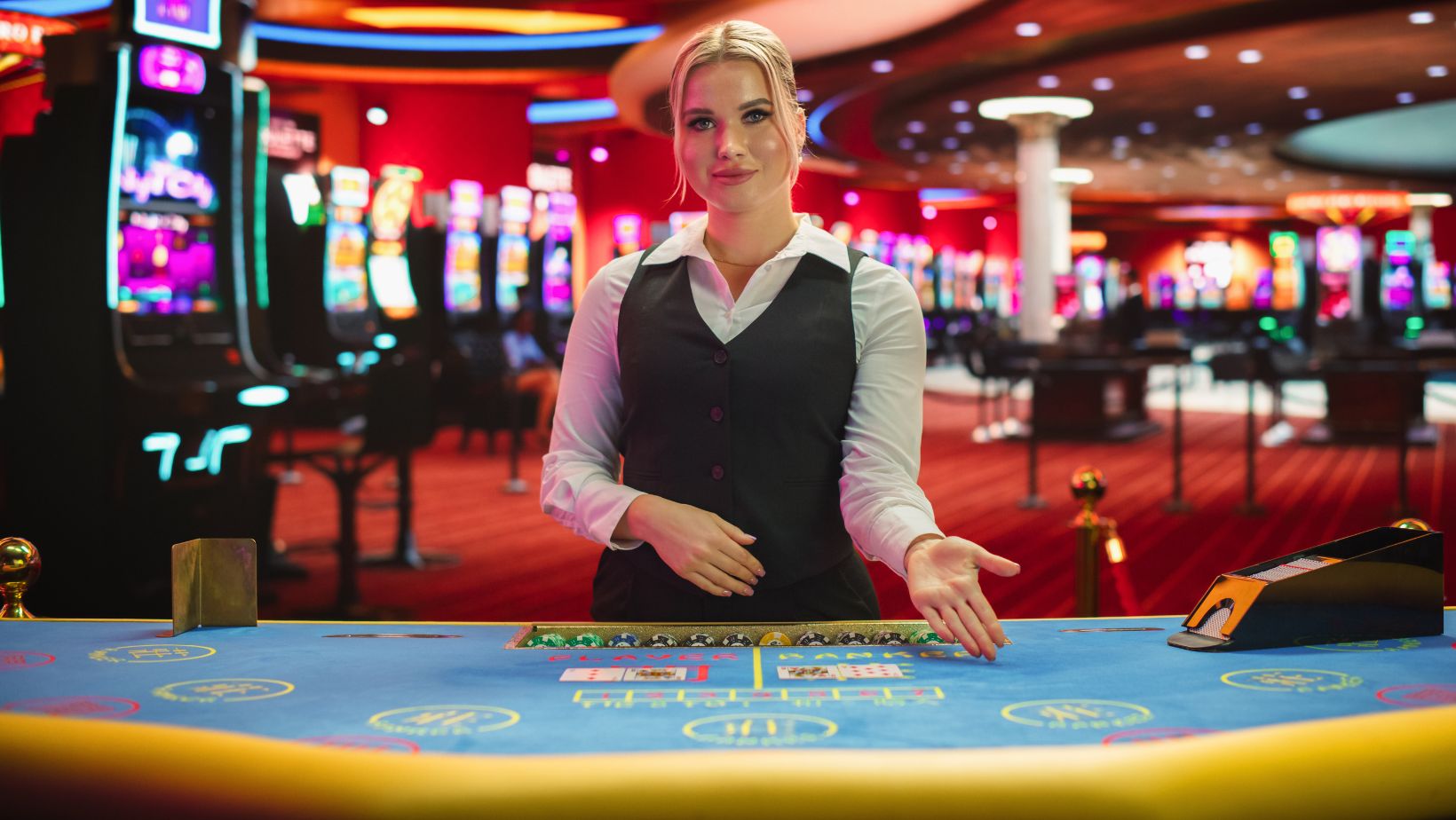
The online gambling market has experienced significant growth in recent years, with projections reaching $153.57 billion by 2030. This surge is driven by technological advancements, expanded legalization, sports betting popularity, and the widespread adoption of smartphones. Technological advancements, particularly the integration of live-streaming technology, is transforming the online casino segment.
What Are Live Dealer Games?
Live dealer games bring the atmosphere of a real casino directly to your computer or mobile phone. Instead of using computer-generated graphics and random number generators, these games include human dealers who conduct the games in real time. All of the action is captured by high-definition video streams, allowing for transparency and allowing players to watch dealers shuffle cards or roll dice.
Live dealer games have had an enormous impact on online gambling as a whole. Because of the real-time interaction, authentic casino feel, and a wide variety of games, it has gained popularity in a short time. By integrating advanced technology such as high-speed internet connections, multiple camera angles, and advanced software, it’s possible to deliver a seamless and immersive experience to players.
Online casinos, like tg casino, offer various types of live dealer games that use live streaming technology. Players can see the dealer shuffling the cards in blackjack, while cameras capture the roulette wheel spinning from multiple angles. This provides a higher level of transparency in online gambling.
Technological Foundations: Building the Live Casino
Many technological aspects would have been considered before implementing the live casino. These are important as they would affect player experience and game quality. First, one would need to consider video streaming technology. By integrating high-definition video and ensuring low latency, live games would have minimal delays. This would mean that players would need to have a reliable internet connection, to enjoy the game.
Another important integration is Optical Character Recognition (OCR). OCR technology allows for the physical actions of the dealer to be translated into digital data. Cameras scan and interpret elements like card shuffles and roulette wheel spins. This lets the online interface accurately show the game’s progression.

GCUs have also played an important role in the success of live games in online casinos. Game Control Units (GCUs) are devices that are attached to the game table and encode the video feed and transmit the data between the dealer’s actions and the online platform. This ensures that the online interface stays synchronized with the live video stream.
The last technological feature to consider would be software and platform integration. To ensure that live games function smoothly, software developers have to ensure that the platform is stable and secure and that the user interface design is easy to use.
The Player Experience: Immersion and Trust
For live games to be successful, casino companies need to build player trust and create an immersive experience. This is done by creating the atmosphere of a real casino. By designing studios that resemble casino floors and integrating similar lighting and background noise, players can feel as though they are in a physical casino.
Additionally, players are reassured by the presence of a live dealer. This increases player trust and may increase the amount of time spent playing. By integrating a live dealer instead of relying on technology, as well as integrating live chat and other player interaction, players are more likely to trust the game.
Online casinos and, to a larger extent, mobile technology, have increased the accessibility of live dealer games. By expanding gameplay to the internet, the client pool has been increased exponentially. By optimizing games to be tailored to mobile phones, casino operators have greatly driven player retention by ensuring minimal load times and responsive design, making gameplay more enjoyable.
The Future of Live Dealer Games
There are many possibilities for the future of live dealer games. By integrating virtual reality (VR) or augmented reality (AR), games could be forever changed. For example, VR allows players to be transported into fully simulated casino environments.

The technology replicates what you would see, hear, and feel in a real casino. This would lead to enhanced social interactions and could create a stronger sense of community among players.
AR, on the other hand, can overlay digital information onto the real-world view – this would enhance the live dealer experience. AR, for example, allows players to see virtual cards and chips realistically on the live dealer table, allowing for interactive gameplay. This means that players would be able to manipulate virtual objects and interact with the game in new ways.
Overall, VR and AR could change the entire landscape of live dealer games. Not only would games be more interactive, they would also be more accessible to those who may not be able to enjoy a brick and mortar casino. Live dealer games have already come so far, and yet, the possibilities for future developments seem endless.











